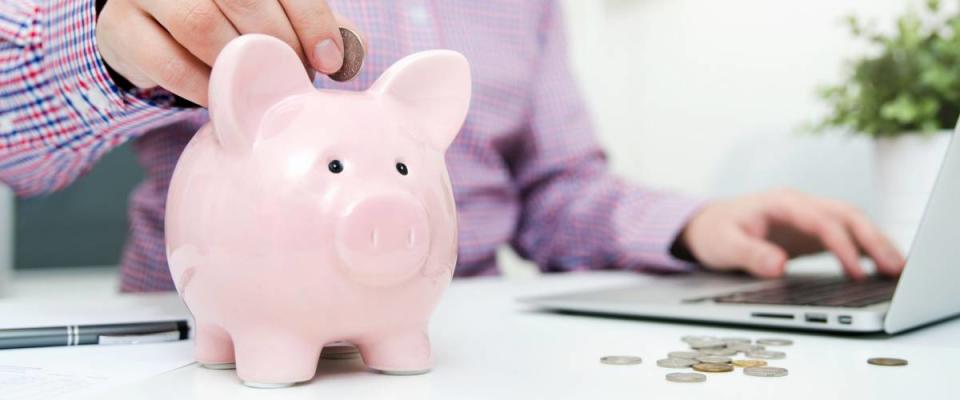No Money for a Rainy Day? Here's How You Fix That

When it comes to saving for emergencies, most Americans have a surprisingly devil-may-care attitude.
A 2015 study by the Financial Industry Regulatory Authority revealed that only 46% of households have three months' worth of expenses set aside.
FINRA also reported that 34% of households couldn't scrape together $2,000 within a month to cover unplanned emergencies.
That would barely cover most car repairs. A hospital stay or bout of unemployment could be financially catastrophic.
Most folks are aware they should be saving; they just don’t know how to go about it. Here are six tips to get the ball rolling.
1. Define 'emergency'

A true emergency would be blown transmissions.
Since emergencies are sudden and unexpected, it may be easier to define what they are not.
Your kid’s senior prom, a lack of Super Bowl tickets, a cruise sailing without you, and Christmas are not emergencies.
True emergencies interfere with one’s ability to earn money. They threaten someone’s health or make a home unstable.
Examples include blown transmissions, accidental poisonings and termite infestations.
Set up an in-case-of-emergency-break-glass fund. Save for next year’s Super Bowl in a separate account.
2. Choose the right kind of account

Put your funds in a savings account with easy access.
The emergency account should be accessible enough to withdraw money from on short notice but not accessible enough to impulsively dip into.
Look into a high-yield savings account or money market account. Compare interest rates and fees. Make sure it’s convenient to transfer or withdraw money in a hurry.
Eliminate the need for self-discipline or willpower. If your employer pays by direct deposit, divert a portion of your earnings to the savings account. If you deposit your paychecks, set up recurring transfers to the emergency fund.
Certificates of deposit (CDs) are designed to be long-term investments, and there are pros and cons to saving that way.
CDs pay significantly higher interest, but banks and credit unions typically charge a penalty for cashing out early. However, that sometimes encourages weak-willed people to leave their emergency savings alone.
3. Find ways to beef up your fund

Save a little. Make coffee at home, and resist the lattes.
One surefire way to boost the amount you can save, darn the luck, is to stop spending money. Scrutinize your bank and credit accounts to find out where it’s all going.
Consider downgrading or eliminating cable TV. Cancel the gym membership, and work out for free at the community center. Skip the daily Starbucks, carpool to work, install a programmable thermostat, and cook at home.
Teach art, music, swimming or carpentry in your spare time. Sell excess furniture, electronics and housewares on eBay or Craigslist.
4. Install money-saving apps

Employ the use of helpful saving apps like Qapital.
Dozens of free apps can help people save.
Some, like Qapital, manipulate money in linked checking and savings accounts. They can be programmed to do all kinds of crazy things like transfer the price of every pizza delivery from checking to savings.
If nothing else, that’s a strong incentive to gorge on salad and shed those extra pounds.
Wallaby tracks credit card rewards and time-sensitive promotional offers. Clarity Money suggests credit cards that are compatible with users’ income and spending habits. It also tracks purchases and sends alerts to users who are about to go over their budgets.
SwagBucks gives you gift cards to over 100 retailers in exchange for completing surveys.
Ebates receives a commission from retailers for sending shoppers their way. The app features daily deals such as 14 percent cash back on purchases at Ulta, Travelocity, Microsoft and dozens of other retailers. Cash back is paid quarterly by check or via PayPal.
5. Calculate how much you need to save

Crunch the numbers, and don't forget to include miscellanaeous expenses in the equation.
At a minimum, every household should save enough to cover expenses for three months. The target amount depends on factors such as the number of kids in the household, what is owed on the mortgage and career prospects in the event of job loss. People in careers with high turnover or injury rates should double the goal.
Mind you, the amount needn’t match the household income. The immediate goal is to create a cushion for emergencies. When you have that, work on saving for an unfortunate event like long-term unemployment.
Once you’ve decided how many months to save for, start crunching the numbers.
Monthly expenses typically include rent or a house payment, a car payment, home and car insurance, fuel or other commuting costs, child care, utilities, cellphone and internet, cable, health-related costs, groceries, paper goods, cleaning supplies, toiletries and clothing.
Don’t forget miscellaneous expenses like haircuts, dry cleaning, the occasional date night and pet-related mishaps on the white rug.
Multiply the monthly expense total by the number of months. A banker, accountant or credit counselor can take a look to make sure you’re on the right track. There are also emergency fund calculators online.
6. Don't shrug any of this off

Don't just blow unexpected windfalls, contribute to your emergency fund!
Experts grimly recommend saving enough to cover at least six months' worth of expenses. Annual household spending is around $60,060 on average as recorded by the U.S. Bureau of Labor Statistics in 2017, so the emergency fund for average earners should be approximately $30,030.
Five-figure savings goals are always intimidating. Just remember that saving even a small amount each month is better than saving nothing at all. Stick to your goal whether it’s $500, $200, or even $50 per month.
Jump-start your savings by shopping around for banks that have introductory bonuses for new customers. Resist the urge to blow the big tax refund. Each time you pay off a debt or receive an unexpected windfall, sock it into the savings account.
If you build a big enough buffer, you’ll never have to go into debt for unplanned expenses. You won’t drain your retirement fund or be forced to sell stocks at a disadvantage. You can afford to seek emergency care if you accidentally poison yourself.
You can even get a pedicure on the way home. But make sure to get started on that emergency fund today.

